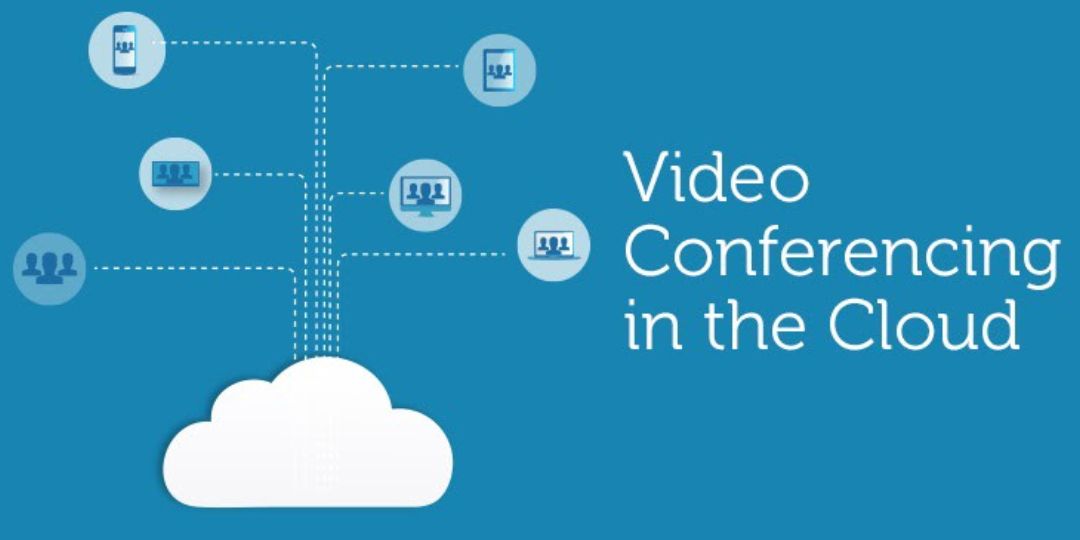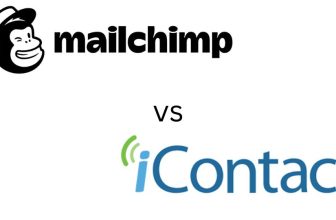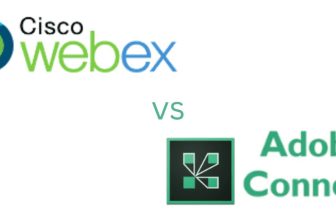
Did you know that during the COVID-19 epidemic, 84% of healthcare practitioners used video conferencing? Healthcare professionals employed technology to provide clients with alternate methods of receiving assistance that did not require in-person visits. Given the convenience of telehealth, it’s no wonder that 54% of practitioners said they will continue to give online assistance even after the epidemic is over. The advantages of video communication, however, are not limited to safety in emergencies that need social distancing.
Video conferencing is a means of communicating between one or more persons through the internet. For much of its existence, such online meetings were conducted through specific app platforms, which required both parties to buy specialized proprietary equipment and install specialist software.
Enterprise Video Conferencing – Best Guide.
However, the most recent version of this kind of communication, using WebRTC standards, allows parties to converse using easily downloaded applications or even conventional web browsers. Video conferencing has gained popularity as a tool in practically every industry, including healthcare. Video conferencing in healthcare is becoming increasingly popular among medical professionals and their patients.
Given that video conferencing allows people to engage virtually as if they were in the same room, it can be viewed as the modern equivalent of home visits. As long as both sides have a good internet connection, medical care providers can contact their patients remotely. It’s not simply about being able to communicate across large distances. There are also more advantages to video conferencing.
Video Conferencing in Healthcare Market: Growth and Competitive Analysis
With the introduction of new technology in various healthcare procedures, the global healthcare IT business is quickly developing. Video conferencing is one of the most important services utilized in the healthcare business, as it allows healthcare organizations and patients to practice more easily.
Video conferencing is projected to emerge as the most promising technology driving the healthcare IT market among telemedicine services. Video conferencing is real-time video communication between two or more people. The notion of healthcare video conferencing was created to allow medical treatment to be provided regardless of the location of the healthcare organization/medical patient. With the advancement of telecommunications and information technology infrastructure, the use of video conferencing systems is likely to skyrocket in the future years.
The report, titled “GlobalVideo Conferencing in Healthcare Market- Share, Growth, Opportunities, and Competitive Analysis, 2015 – 2022,” provides strategic insights into the global video conferencing market, with a focus on the healthcare sector, as well as the market size and estimates from 2013 to 2022. The research report includes a detailed analysis of many market categories based on deployment methodologies and cross-sectional studies across various regions. Furthermore, the report includes a comparative analysis of several categories for the years 2014 and 2022. The research also offers a comprehensive analysis of market dynamics such as market drivers, constraints, and opportunities.
The report also contains in-depth research of:
- Market fuelers, market obstacles, and their influence on market growth Current and future market trends to justify the impending profitable markets within the video conferencing and telemedicine business
- In-depth examination of the competitive environment
- Market size data over the last two years
- Analysis of SRC (Segment-Region-Country)
Overall, the research analysis delivers the following:
- A comprehensive analysis of the worldwide healthcare video conferencing industry.
- Offering market size and forecasts for the years 2015 through 2022.
The on-premise deployment strategy dominated the worldwide video conferencing industry in 2014, accounting for more than 80% of total market revenue. The on-premise deployment strategy includes a comprehensive solution, including video conferencing gear and software. As a result, the on-premise form of deployment is more expensive than the other ways of deployment. Video displays, cameras, audio systems, and other accessories are common pieces of gear required for video conferencing setup.
Healthcare organizations, in general, choose on-premise video conferencing setups to conduct online medical consulting, team collaboration, and training for their business. As a consequence, the on-premise sector is expected to maintain its market dominance during the projection period. Among the top providers of on-premise video conferencing systems are Polycom, Inc., Cisco Systems, Inc., and Huawei Technologies Co., Ltd.
Nonetheless, with the increasing usage of cloud-based services across many applications throughout the world, demand for cloud-based video conferencing solutions is likely to expand rapidly in terms of revenue and adoption in the future years. Cloud-based video conferencing solutions are becoming more popular owing to their lower prices, flexibility, and scalability when compared to on-premise video conferencing systems.
Solutions for Secure Video Conferencing
As healthcare practitioners become more aware of the benefits of video conferencing/teleconsultation technologies, they are being used more often. It is an industry that is expected to develop further, with Transparency Market Research projecting a value of £26 billion by 2020.
Whether the technologies are utilized for outpatient check-ups, remotely assisting patients with physiotherapy, consultations, a multi-disciplinary team meeting, or a cross-site trust meeting, the video may improve communication and cooperation.
Over the next several days, we’ll be discussing the benefits of video conferencing in healthcare and how it may be best used in various areas of the healthcare business, based on our extensive experience, client feedback, and extensive research.
The Advantages of Video Conferencing in Healthcare
- Save both time and money
Doctors can use video conferencing to reduce the time and money spent traveling to patients or meetings. Doctors may use video to interact directly with their patients, study them, offer prescriptions, and monitor the course of treatment. Because video conferencing is available on all major platforms, enterprises may install the software on existing devices.
Another expense that video conferencing can help to reduce is the cost paid when a patient fails to show up for an appointment, which cost the NHS £1 billion in 2017 alone, according to The Independent. This would no longer be an issue with on-demand Teleconsultations. If the patient does not appear, the doctor simply moves on to the next patient in the virtual queue.
- Reduce travel hours and assist more patients
According to the Independent (January 2018), NHS A&E waiting time performance is at an all-time low, and emergency services are in crisis mode. Many patients seek treatment at A&E owing to long wait periods and a lack of available appointments at their GP surgeries, which are also under tremendous strain.
Teleconsultations, which allow doctors to diagnose patients without requiring them to visit the surgery/hospital, can help alleviate some of this burden. Patients may quickly schedule an appointment online and perhaps talk with a doctor within hours. GPs may go through the virtual line more quickly while maintaining patient care. Doctors may still notice their patients’ symptoms and can always refer any patients who they believe ought to be seen in person.
Patients who reside in rural places, are too unwell to leave their homes, are traveling, cannot take time off work, and so on have far greater access to physicians through video. They may quickly schedule an appointment online, from wherever they are, using whatever technology they have. Patients with chronic conditions (such as diabetes) or who require follow-up treatment (such as physiotherapy) might be followed and assisted through teleconsultation, resulting in fewer trips to hospitals/GP surgeries.
- Remote patient monitoring
Patients suffering from high blood pressure, heart disease, asthma, or diabetes might benefit greatly from remote patient monitoring (RPM). Along with smart devices that measure vitals and securely upload recorded data to a patient’s EHR, the ability to seek prompt treatment from a doctor through video conferencing increases the likelihood of favorable results for patients with chronic conditions.
According to a survey looking into the effects of using telehealth to address hypertension outcomes, telehealth-based communication used as part of an integrated care environment, in conjunction with special care planning and self-management education, resulted in a promising 40% of patients having lower blood pressure measurements.
Telehealth solutions have been utilized by patients to obtain online assistance with medication management, counseling, and monitoring. For those who might ordinarily decline in-person care, scheduling appointments and gaining access to an expert doctor who can advise them has become simpler. The Health Resources and Services Administration (HRSA) offers advice on how to incorporate RPM into your practice by combining video sessions with self-management and smart device use.
Your workflow would entail the following steps:
- Arranging an initial telehealth visit to guide the patient through the intricacies of smart device usage
- Sending the patient to the equipment supplier who will assist them in setting up the device
- Explaining to the patient what data the device will gather and transfer.
- Giving the patient textual or PDF instructions to follow
- Arranging a follow-up consultation after a few days of use to answer any queries the patient may have
Video communication allows healthcare experts to help patients through the intricate processes of vital monitoring at home. As a result, hospitalizations and emergencies for individuals with chronic diseases should be reduced.
- Video Conferencing Improves Healthcare Service Quality
Healthcare services are not fairly dispersed across the country. In general, metropolitan locations are overserved, whereas rural areas have fewer healthcare options. Specialist healthcare service providers may serve the rural population by employing video conferencing, allowing rural patients to obtain specialized therapy that they might not otherwise have access to.
Rural patients, for example, can visit smaller local clinics near their homes and receive specialist care from doctors in larger regions through video conferencing while under the supervision of the local doctors. Alternatively, doctors can utilize video conferencing to monitor their patients’ post-discharge recovery status and ensure they are recuperating as predicted. These are just a few of the numerous advantages of video conferencing in healthcare.
Another method of video conferencing that may improve healthcare quality is by giving physicians, nurses, researchers, and specialists a tool and means to interact efficiently when treating patients. Patients benefit from higher-quality services as a result of teamwork enabled through video conferencing.
Video conferencing also helps to lessen the number of times patients has to wait. Patients can use teleconsultation services to consult with any available doctor. The patient may simply schedule the earliest available appointment, receive a diagnosis, and, if no more tests are required, obtain medications for their condition. This frees up doctors at clinics and hospitals to serve patients in more critical medical situations.
- A Secure Virtual Environment Is Provided By Video Conferencing
As one might expect, medical services necessitate complete discretion. Furthermore, medical records must be well-secured to protect patient’s privacy. This is where video conferencing stands apart from other forms of communication.
Peer-to-peer transmission is used for video conferencing by premium video conferencing providers. Importantly, data transfer to and from individual conference attendees is encrypted from beginning to end. As a result, interacting via video conferencing is safe, protecting patients’ privacy. Few other kinds of communication can match it.
Ways to use video conferencing in healthcare regularly
Even if you don’t interact with patients from rural locations and your responsibilities are mostly regular, telehealth-based video solutions can help you enhance your productivity and the quality of your services.
Even if you are not ready to transition totally to telehealth, there are six areas where you may begin to adopt video conferencing:
- Prescreening: Allow your patients to schedule a brief call with you if it is unclear if they require hospitalization. You will be able to ask them questions, monitor their symptoms, and give remote assistance if an in-person visit or hospitalization is not required.
- In low-risk scenarios, providing immediate aid: In some circumstances, particularly when a patient’s symptoms are obvious, you can assist without making them wait for an in-person consultation.
- Chronic sickness is being monitored: You may utilize video conferencing software for rapid examinations and medication management if you need to watch your patient frequently.
- Counseling over the internet: Current rules in many states allow for virtual counseling even when the patient is out of state. If you work in therapy, you may assist your patients even if they are unable to physically attend a session at your clinic.
- Assisting patients with restricted mobility: Some people may find it challenging to receive healthcare services due to limitations that limit their movement. They may easily access your medical services if you use video conferencing in your healthcare practice.
- Maintaining contact with patients: Following the patient’s discharge from the hospital, it may be necessary to continue monitoring their health. Video conferencing solutions may be utilized for fast check-ups, and if there are any issues, the doctor can arrange an in-person consultation for further evaluation.
Essential Features that are required for video conferencing in healthcare
Choosing the best video conferencing platform is critical to effectively integrating healthcare into your clinic. To ensure that you get the most out of the platform and that your patients have the greatest experience possible, see if the program you wish to use includes:
- Compliance with HIPAA
- Video calls with high resolution
- one-on-one and group conferencing features
- An internet platform for arranging appointments
- Online meetings that do not require any other software tools
- There are no time constraints, downtimes, or problems.
- Options for screen sharing and conversation
- A meeting recording modification option
You have the option of using a video-conferencing-only solution. There are systems, however, that also offer online billing, a health monitoring system, and secure chat.
What to Look for When Purchasing Video Conferencing Software
Using any conferencing software or video treatment tool, no matter how popular, is not recommended since it may expose practitioners to several hazards. If you intend to utilize Skype, you do so at your own risk. However, if you’re looking for video conferencing software, here are a few questions to ask:
- Is it convenient and comfortable?
Video conferencing in therapy offers the extra benefit of making services more accessible and convenient, and it should be a practice upgrade. When selecting a program, evaluate the degree of technical literacy of both your patients and yourself as the therapist before investing in any integrated care technology.
- Is the software HIPAA-compliant?
When it comes to video conferencing systems, HIPAA compliance is the duty of both the health care provider and the software vendor. As a result, several of the most popular video chatting technology providers, such as Skype, are not advised for usage in mental health care. These providers absolve themselves of the burden of adhering to HIPAA privacy and data protection requirements, and hence are unfit for use in medicine.
HIPAA-compliant companies have deliberately built their products and services to be utilized in telehealth mode. The major technological parameters that constitute HIPAA-compliant telemedicine service offerings are outlined here.
- Protocols/alternatives
- Encryption Authorization
- Networking among peers
- Local data storage
Software that does not meet these fundamental privacy needs may not be a suitable match and may endanger both the therapist and the patient.
- Who uses it?
The fact that other well-known mental health specialists use their items might be a positive indicator that the seller is reliable. This reflects the vendor’s reputation and might assist you in making an informed selection.
The top 7 video Conferencing Applications for Healthcare Professionals
- Chiron Health
Chiron Health, a prominent telemedicine software supplier, wants to make routine examinations more pleasant and easy for both patients and healthcare practitioners.
Its cloud-based video conferencing software allows you to securely communicate with patients via video visits and obtain payments from private payers. Direct connectivity with your EHR (electronic health record) or PM (practice management) software eliminates the need for duplicate effort. You may schedule in your existing program, and the data will be linked to Chiron Health automatically.
The software’s main selling point is bespoke branding—you may show your clinic or practice’s logo in the patient-facing video tool. While other software on the list allows for unbranded video conversations, Chiron Health is a fantastic alternative for healthcare providers looking for a branded video conferencing solution to maintain brand continuity and loyalty.
Notable features include
- Patient email notifications
- SMS patient marketing
- Telemedicine eligibility check.
- With Chiron Health’s Android and iOS mobile apps, patients may contact you from anywhere.
Disadvantage
- Lacks a variety of features
- Significantly more expensive than the other solutions
- Not able to optimize the patient scheduling experience through omnichannel patient routing and patient profiles
Pricing
- Pricing for Chiron Health begins at $150 per month per provider.
- If you sign up for yearly billing, the cost drops to $120/month per physician, for a total of around $1,440/year.
- TrueConf
TrueConf may be a suitable alternative if you need a video conferencing application that is entirely compatible with telehealth software and equipment.
It can record video from many types of equipment (for example, endoscopes), transfer DICOM data, and exhibit your show and desktop slides. Your video quality will stay great regardless of the material you are streaming, thanks to dual video technology (which allows you to capture two distinct desktops at the same time).
You may also broadcast webinars, offer video courses, organize virtual meetings (including virtual rooms), and start polls to collect replies from participants. Some of the tool’s applications can also output 4K UltraHD 3D video. However, this may not be possible since it requires passive or active technology with 3D glasses.
Notable features include
- Monitor intricate surgeries
- Communicate with distant professionals
- Supply 3D laparoscopy or other medical equipment if you have access to this type of technology.
- TrueConf is compatible with all major operating systems, including iOS, macOS, Linux, Android, and Windows, as well as WebRTC for browsers.
Disadvantage
- Although it’s difficult to criticize TrueConf’s solution, the absence of phone assistance is a drawback.
- If a patient does not feel comfortable appearing on video and prefers to speak with a live person over the phone, healthcare practitioners may face difficulties.
Pricing
- TrueConf is free for the first 12 presenters and attendees.
- Upgrading to the premium edition of TrueConf will raise the threshold to 36 speakers and 800 people for larger locations.
- Teladoc
Teladoc is a “virtual medical practice,” with doctors qualified and licensed in topics from general medicine to mental health, dermatology, and more. Instead of waiting weeks for an appointment, patients utilize the Teladoc mobile app to connect with a medical expert fast. They provide video, phone, and text conversations between patients and doctors 24 hours a day, seven days a week.
Healthcare providers that want to provide Teladoc’s services to their patient base will be relieved to learn that Teladoc Health claims to have a secure, scalable platform as well as the human resources to expand. Because of Teladoc’s analytics-driven patient engagement services, there is also a strong emphasis on customer experience.
Teladoc also presently accepts contract employees who are “physicians with board certifications in internal medicine, pediatrics, emergency medicine, and family medicine who are devoted to high-quality virtual treatment.” They’re also properly insured, and before treating anybody virtually, every new hire must go through Teladoc platform training.
Pricing
- Teladoc, unlike some of the other telehealth and video conferencing services discussed above, does not publish pricing for providers and healthcare organizations.
- To learn more, you should get in touch with Teladoc.
- Doxy. me
One feature that distinguishes doxy. me is that they are proudly app-free, giving their services to both doctors and patients through internet browsers rather than needing downloads. If a substantial number of your customers are unfamiliar with smartphones and don’t want to go through the “downloading applications” hoop, this simplicity of use might go a long way toward improving patient experience and happiness.
Another useful feature for both patients and physicians is a virtual “waiting room,” where you can see who has come for the next appointments, much as in a physical office. And, thanks to the Meeting History function, you won’t have to keep track of each visit’s date, time, and length by hand, making billing much easier.
Doxy. me, like Teladoc, is a telemedicine company that promotes its confidentiality and compliance with worldwide medical record privacy legislation.
Notable features include
- Doxy’s waiting area features a patient queue
- Allows patients to digitally check-in
- Letting their physician know they’re ready for the appointment.
- Each patient waiting area may be customized with photographs, films, and reading materials.
- In-app appointment management provides greater flexibility than competing video conferencing providers.
- If a patient is running late, providers can swiftly reschedule appointments.
Pricing
- Individuals pay $35/month for audio-only conversations (or cloud phone service) and high-quality video, while clinics pay $50/month per user—plus a $300 startup cost to brand and personalize your virtual storefront.
- VSee
VSee not only provides video communication for telemedicine appointments, but system components also enable patients and physicians to communicate between consultations.
Providers can create patient health objectives and track progress using devices such as wireless scales, blood pressure monitors, and Fitbits. Patients can share photos, meal diaries, and mood charts as status updates.
Notable features include
- VSee’s integrated features allow providers to collect fees and patient intake forms.
- Remote exams benefit from PTZ camera control.
- Peripheral streaming enables providers to view digital photographs as well as their patients on the same screen.
- VSee is a good option for providers that want to allow walk-in telemedicine appointments.
- Patients who visit the virtual waiting room encounter a branded environment with wait time updates and instructional movies.
- When individuals are waiting for their appointments, they may get help via live chat.
Pricing
- Individual users pay $49 per month; contact sales for enterprise rates.
- Shell and NASA are two examples of significant enterprises that use them.
- It has been optimized for places with weak internet access, making it ideal for clients who live abroad or in rural areas.
- Medici
Medici is a telemedicine smartphone app with a variety of features to help clinicians and patients communicate. The ability to integrate patient contact information from a compatible EHR into the Medici app is a unique feature. Before a therapy session, patients may use the app to request video calls and examine consultation fees.
Providers may use this secure messaging software to e-prescribe drugs, collect payments, and benefit from real-time translation in over 40 languages. Colleague Connect makes it simple to work with individuals in the business while always remaining HIPAA compliant.
Notable features include
- Connect is a free plan that offers HIPAA-compliant text messaging.
- For HIPAA-compliant video conferencing, the Treat plan is necessary.
- Text messages in 20 languages can be translated using the translation tool.
- A sophisticated mobile app provides clinicians with on-the-go access to nearly every function.
- Patients can readily get messages via cell phone alerts.
Pricing
- Pricing information requires a demo.
- VTConnect
VTConnect is a safe, easy, and long-lasting telemedicine platform. The video conferencing technology not only supports individual meetings but also supports group sessions. With user-friendly solutions that allow patients and clinicians to connect via desktop and mobile devices, the system simulates an in-person encounter.
To safeguard the security of sensitive health information, VTConnect employs end-to-end encryption and password protection. Other communication functions, including real-time chat, file sharing, and data storage, are integrated with private video conferencing solutions.
Notable features include
- Virtual Online Office Portal for money collection
- Secure communications
- Document sharing, and more
- Add your company logo and a unique Online Office Portal URL to make it your own.
- HIPAA-compliant mobile applications are available on several platforms
- Provides an onboarding kit for establishing your telehealth platform.
Pricing:
- Starting at $45 for HIPAA-compliant legal and permission form templates.
- Individual subscriptions are $49.95 a month and include unlimited teleconferencing as well as a signed BAA.
- Professional plans start at $199.95 per month.
Final Thoughts!
When individuals want medical assistance but are unable to visit one, it may be stressful and difficult. You may significantly speed up the care process by using video conferencing. Regardless of where you or your patients are, you can use your laptop or smartphone to organize tests and educate patients on the next steps—all while maintaining that vital face-to-face relationship.
Of course, you’ll need to select the appropriate video conferencing software to accomplish this. While all of the alternatives listed above are intended to assist improve patient outcomes, you should make sure that the software you select is appropriate for your goals and the way your institution runs.
Don’t simply choose the program with the lowest price or the most functionality. Evaluate your requirements, and then select a solution that will assist you in providing an excellent patient experience that you will be pleased with.






